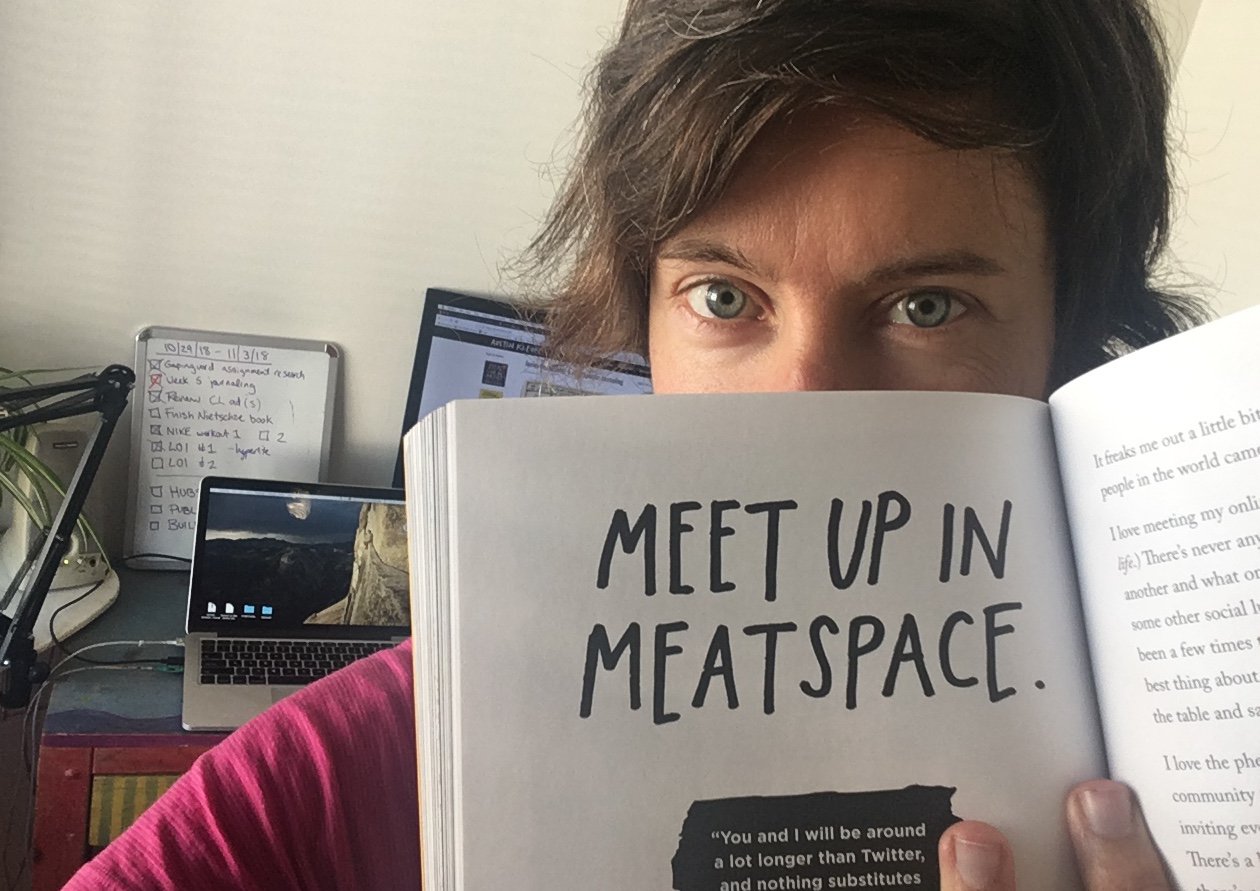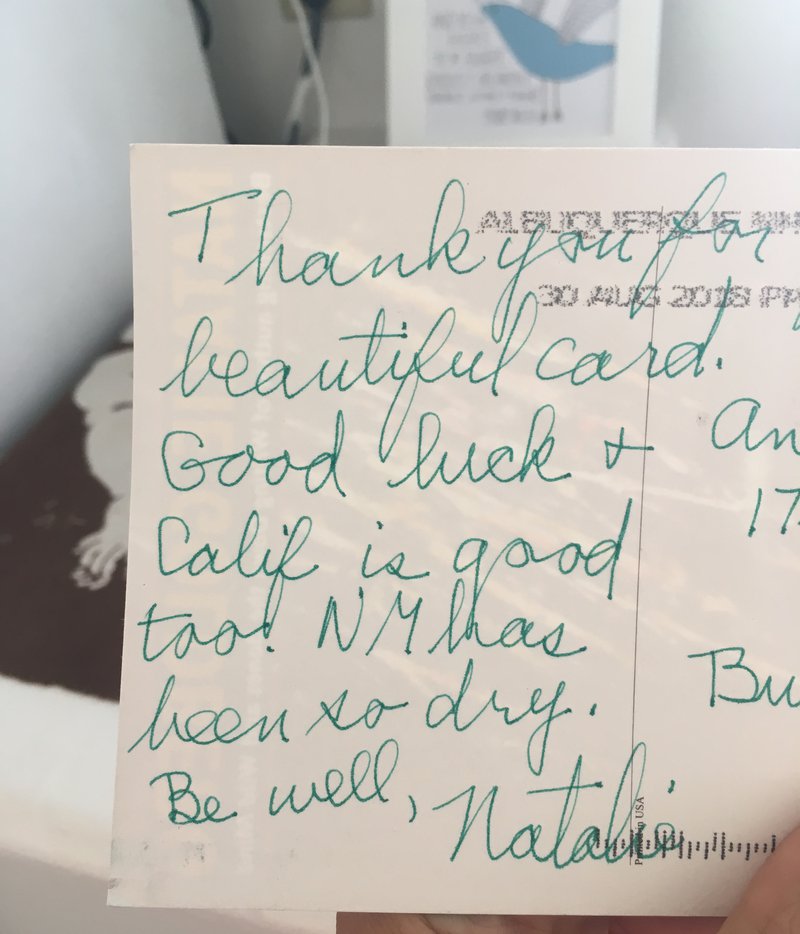
from now on / with the sky as my roof
from now on / let the risk lead me to
from now on / somewhere I never knew
"Royal Blue", Cold War Kids
Last Saturday, I finished Antelope Island Buffalo Run 100 under my original goal time with trail conditions less than ideal, all while smiling far more than I thought possible for a rainy day out on an island surrounded by ornery bison.
I knew my legs could run the pace I intended; I’d felt it in my body and mind for months. What I didn’t know was that it would all come together in a bouquet of glowing sage and hopscotched puddles and an overall win for me: it was a day of firsts.
So, what actually happened out there? Was it just a magical day for me alone? Or did my exuberance extend beyond my bubble of bliss and bleed out into the ether of others. I hope so, because it truly was a goddam amazing day out there. Everything I hoped for happened, and then some.
Last fall I set a goal to run sub-24 hours on the Stagecoach 100 course in Flagstaff. I met that goal and finished in 23:28, but my GPS as well as most others only tracked about 95 miles. This tugged at my brain for months. I made my specific goal, but did not feel like I had done the more meta-goal of running 100 miles in less than 24 hours. And then, with a blazing fast 50K in November logged on the now-familiar Antelope Island trails, I was heading into my new hometown of Salt Lake City and winter with excellent fitness. I wanted to capitalize on this.
I ran more than most here in Salt Lake City do in the winter. Many of the trail runners are out on the ski slopes, trudging up peaks on snowshoes, or (horrors!) taking some needed time off. Not this one. These legs were continuing to pound 50 mile weeks, sometimes on snow, sometimes on pavement. And nothing was breaking down. Yet.
Early February brought RUFA's 12 hour race, a good chance to see if my overall fitness was workable. Indeed it was, with 4 snowy frigid laps completed in just over 9 hours. Even with time enough for a 5th, I called it both a day and an excellent training run.
Only two weeks before the race I finally realized the start time was 10am. This is a massive bonus in logistics. Why? Here's what happened race morning: I woke up after a full night's sleep in my own bed at 6:30am, made coffee, did morning rituals (ahem), and then got in my car at 8am to drive to the start where I was one of the first to arrive and got front-row finish line parking. SCORE.
RD Jim Skaggs said his friendly hellos as I shuffled my final drop bag contents due to the drizzling forecast. Where should my many jackets go? Where should I put my knickers? Should I start in shorts? Waterproof jacket or no? By 9:50 I'd gotten everything ready, did a short meditation in my car, and stumbled out into the crowd. And we were off.

My goal? A sub-22 hour finish, which would be a 100 mile PR by more than a minute per mile. My plan? Go harder than I ever have in a 100, and see where this theoretical redline might live. Can I toe the line and not fall apart? Now, the weather presents new challenges. The trails of Antelope Island State Park are insanely runnable when dry and tamped down; not quite as runnable when wet, sloppy, or tracked out by horses and dried to lumpy.
In the early and climb-heavy miles I chatted with a few folks, including my friend Ron Hammett from Las Vegas who ran Stagecoach with me last fall. We talked about goals and weather and trail conditions. I hinted that I had a "secret" goal that was not time-based, and he smiled. I noted that I wouldn't make any commitments or decisions until I saw how much time the mucky trail was going to take off my pace. No matter my speed, my plan was still to go hard and take risks, and think of my secret goal every step.
And yet.
Every single mile The Strava Lady on my phone informed me of my previous mile's pace. This was intentional. This was to keep me on top of what I was putting out. This was hopefully not obnoxious to anyone in earshot. I knew that for a sub-22, I needed to average just over 13 minutes per mile, including aid stations and everything that would subtract from actual moving pace. This means any time I heard a number well under 13, I felt good. When I heard a number well over 13, I felt less good. Of course, there are climbs and descents; these all contribute.
The trail? Hopscotch-worthy. Some runnable and actually kind of nice. But chunks were mucky and disgusting and worthy of puddle hopping to avoid soaking wet feet. I ALMOST took a fall when sliding down some slimy mud in the early miles, but saved it and didn't strain anything in the process. Yet my pace was still…. pretty good.
My first bison encounter could have been worse. Somewhere around mile 18, we contoured around a hillside strewn with rocks and outcroppings. I saw a runner in front of me veer way off trail to the right, and wondered why he was going so far for what seemed like a pee break. Soon, he turned around and pointed, and I looked LEFT to see the bison, just feet off the trail and dead ahead of me. WHOA!!
Once out of the path of potential stampede, a certain Fight Club scene came to mind. I of course riffed on it immediately to fit the situation, laughing out loud like a crazy person.

The next chunk of trail went, well, fine. More mucky crud around miles 20-23 but more or less runnable. And then I was on the trail I got to know so well: Mountain View. 11.5 miles each way of flat singletrack along the shore of the lake. I'd run it often in training, and we'd do this stretch 4 times during this race. I was still chugging along. I counted runners and women in front of me as they came by from their out & back. Right now I was 6th woman and about 20th runner. I'm a closer, so this was perfect.
I arrived at mile 33, The Ranch, at a pace that indicated I might be able to pull this off. This was seriously happy-making, and yet, nearly 70 miles to go. Thinking about how many miles I have yet to traipse does not mess with my head. It does not depress me to think, at the 38 mile Frary Aid Station, "oh, I have a 100K race to go yet". It does not drown me in despair to complete my first 50 mile loop in 9:58—one hour under my previous 50 mile PR—and consider that I need to do it all over again, in the dark, and not slow down too much. I am lucky.
I lingered at the 50 mile for 10 minutes and yet that seemed long. All race my aid station stops were mercifully quick and focused, eyes on my goal. A few people said I was 4th woman and 3rd had just left. I strapped on my lights and said to anyone who would listen, "Hey, great 50 mile loop! I loved it so much I'm going to do it again!!!" and headed out in the quickening dark and intensifying drizzle toward Elephant Butte.
100 milers are a fascinating study in mellow focus. There's a flow state that happens when you just go, but not get sloppy. I found this state repeatedly during my race, but especially in the dark. I went past Alicia on this stretch, who said the messy trail took more out of her legs than she hoped. I wished her well and trudged on and through the next 14 miles of up/down/rocky/winding, until it was mile 65 and the gauntlet was done. I'd crossed 100K in another new PR, and needed to keep the wheels on.
No more bison on this next stretch as I blew through mile 70 at the start/finish and readied myself for the final 50K. By now I knew I could make my sub-22 if I kept eating and moving, but one never knows how things can implode, even at mile 95, let alone 70. Again to the Mountain View trail, again through Frary aid, where they told me the lead woman had left "not long ago".
Oh yay. Oh no. I've still got 22 miles to go, and the idea of catching up worries me a tad. Chasing might be entertaining, but being chased? Fucking terrifying. And yet, exciting. With 19 miles to go, I pass Dana and her pacer and hold my pace, putting a little distance on. I spent 8.2 seconds at The Ranch aid station (the turnaround) and see how long it takes before I see Dana again. About 3 minutes, which isn't long. And yet, that's over a minute per mile. Maybe….

I keep going. Back to Frary. Now 11 to go, and every single mile I am calculating how many minutes per mile I need to average to still break 22. It's over 15 minutes per mile now and I feel…. awesome. I pass more runners, one by one. Most with pacers. Some say, "go get 'em!". A few realize that I'm the first woman they've seen go by and they get enthusiastic which goads me on even more.
I text the friends who might possibly be roused from Salt Lake City to come see me at the finish, but it is 5am, after all. Back to the utter slop of the final mile before the fence line. Back up the hill at mile 94, back to the final loop around White Rock campground with the chunky footing of the Lakeside trail. I'm wondering where Dana could be. Is that light behind me her? The next light? Did she rally? I keep moving through the final aid station with barely a glance at the table.
And then, I can see the finish, a long two miles to go yet, and with just enough light that I turn off my headlamp and handhelds. Just in case someone behind me is trying to see my light in order to make one push to catch up. Sneaky? Perhaps. But I needn't have worried. The last bits are on road, first pavement and then soaked gravel. My face almost hurts from all the grinning I've done in the last 21 hours as I turn towards the tent one last time, and let out a WHOOP!
It's quiet here and no one looks official, so I wander into the tent to let them know I just finished. And it's over.
21:32:51 and first place woman by over 45 minutes.

And that was how it went. So many feels for everyone out there on the unutterably gorgeous island with me, from runners to volunteers to family and friends of all of the above. While I did not bring along my own crew, I was still surrounded by friends and felt at home, every single mile.
In the mud, in the slop, in the gravelly sand, in the headlamp lit night, in the misty sky, in the drizzle spit every single hour.
With the chafing, with the nonstop oral IV of sugary goo, with the obscured full moon, with the damp windbreaker, with the furry bison, with the gloves on / gloves off cycle, with the alien glow of the sage, with Florence & The Machine stuck in my head.
Across smiles, across stuck songs, across miles and miles, across slippery trail, across the tread of my brand new shoes, across the hours and minutes as they passed too fast and too slow all at once as they do.
Good gawd, what more do my legs have in me?























